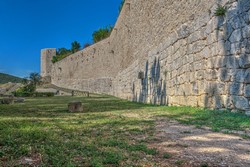A study of past cities for better future cities
The first cities in Europe emerged in central Italy between the 11th/10th and 5th centuries BC – between the Late Bronze Age and the end of the Archaic Period. Prior research has established much of what happened and when in this urbanisation process. The project PAST-PEOPLE-NETS(opens in new window) (Connected pasts and people: Identities and complex polities in middle Tyrrhenian Italy) opened the investigation to address questions related to how and why it evolved, and why Rome (the Latins) ultimately prevailed over the Etruscans. To this end, the two systems were considered together rather than separately, with researchers examining social, cultural and commercial interactions between the two groups. The first analysis considered geographical connections and water-based and land route networks. Studies of Etruria and Latium Vetus showed similarities and differences between the two regions. For example, the Latin communication system showed better efficiency and resilience. Also, although Etruria was larger, its cooperative model prevented a single city from being able to dominate others, while Rome’s dominant political and military policies can explain the harsh competitive behaviour of Latium Vetus. The findings thus help to explain how the two systems worked and why Rome and Latium Vetus eventually prevailed over Etruria. Centred on commercial and cultural interactions, the second analysis explored bimodal networks of specific central Italian sites and artefacts, providing important knowledge on the different modes of circulation of various objects. PAST-PEOPLE-NETS also examined social networks and the decoration of Villanovan pottery as well as sites and family names from inscriptions for the Archaic and Republican Age. With globalisation, research and international political planning is increasingly focused on urban networks and networked cities. PAST-PEOPLE-NETS adopted a similar structural network perspective, studying structural relationships among settlements in central Italy during the Early Iron Age. Its work and findings thus afford a better understanding of the formation of Europe’s first cities present-day identity, cultural and power relations in general.



